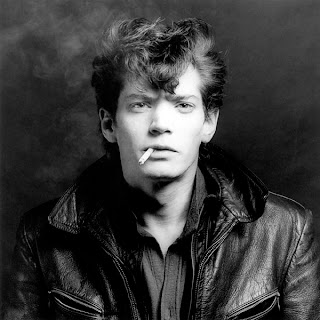Lucian Freud, 1985. Oil on canvas, 559 x 533mm
Private collection Ireland
©The Lucian Freud Archive
After a recent second visit to the National Portrait Gallery to see the Lucian Freud exhibition it made me think about the great portraits in art. What is wonderful about a painted self-portrait is that the sitter is using a mirror, so we really see how they see themselves. This powerful image is rendered more so by the strong brushstrokes that Freud uses with multiple layering of colour & tone that build to a solid almost sculptural presence both physically & emotionally weighty as a result. Photography is more realistic, but is it more representative of the artist?
Frida Kahlo, Self Portrait with Thorn Neclace and Hummingbird,
Nikolas Murray Collection,
Harry Ransom Center,
The university of Texas at Austin
For example, Frida Khalo was able to add symbolism into her self portraits, which would have been extremely difficult to create in camera without the cat & monkey killing each other? Perhaps she could have used stuffed animals? Perhaps the fantasy imagery builds as the layers of the paint were applied... The allowance for change whilst creating an image are so easy now with Photoshop, but somehow the personality of her delicate body is translated through the marks she made. Can this truly be done with photography?
David Hockney
Self Portrait, 1954
collage on newsprint, 16 1/2 x 11 3/4 in
In this Hockney image, the beautiful collage technique really overshadows the accuracy, but is no less powerful as a portrait. By accuracy, I mean that the simplification, even caricature-like nature of it has placed his general features into another realm whereby he is instantly recognisable by his general appearance & key haircut, glasses & shirt.
Robert Mapplethorpe
Self Portrait, 1980
Of course we all know this great self portrait. The steely stare grips you instantly in a way that a photograph has of a sense of immediacy. That is not to say that this is not possible through other art forms - we've all heard the one about the painted portraits with eyes that follow you around the room - but this timeless photograph still breathes the smoke from Mapplethorpe's cigarette never to burn out.
Cindy Sherman
Untitled Film Still #13. 1978.
Collection The Museum of Modern Art, New York.
Of course here we have the consummate self portraitist who takes on a new role each time she is before the lens. Constructing characters for our enjoyment are we seeing a facet of her inner personality or are we just viewing a construct based on a film still or both? I lean towards both as she obviously has a personal interest in the filmic portrait so cannot help have a little of her own personality present in each image apart from the obvious fact that she is the sitter.
© E-J Major
1983 / did not cry
© E-J Major
1989 / hear rain
They come in the form of reconstructions of mug shots published in Marie Claire whereby the photographer used herself as the sitter posing as the woman whose life was spelled out through the tragic demise of her mugshots over a 14 year period. The woman it based on is not named, yet her appearance conjures up a narrative not seen but brutally clear. Major plays with the fiction that can be depicted through self portraiture whilst simultaneously challenging her own identity through this work. I urge you to go & see how powerful this work is whilst the show is on display if you can.
Van Gogh
Self-Portrait
1889 (250 Kb); Oil on canvas,
Self-Portrait
1889 (250 Kb); Oil on canvas,
65 x 54 cm (25 1/2 x 21 1/4 in); Musee d'Orsay, Paris
So does it mean that the painting & photograph are equal?
If Van Gogh were alive today would he be using a camera as well as paint? Possibly...
With the colours available with a click of a mouse or shutter he could have been all the colours of the rainbow without ever touching a brush. Was it the medium or the visual effect?
Does the slower process of putting brush to canvas - the labour itself being part of the appeal - make for a more intense experience for both the artist & the viewer? Is the hand of the artist more present with a medium such as painting than photography?
For this I do not have all the answers, but would love to hear your comments on the subject. I have only featured a few images here. Perhaps I should test this theory with a painted or drawn & photographic self portrait & let you be the judge...
For this I do not have all the answers, but would love to hear your comments on the subject. I have only featured a few images here. Perhaps I should test this theory with a painted or drawn & photographic self portrait & let you be the judge...

+1985.jpg)
.jpg)





